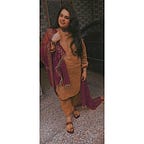A Concise History of Tribal Tattoos: Styles, Significance, and Origins
The art of tattooing, known as “tribal tattoos,” carries a rich and ancient tradition that spans thousands of years. Today, a diverse array of tattoo styles can be traced back to the roots of tribal tattooing. Tribal tattoos emerged as a distinct style closely associated with specific cultures or sub-cultures. They were traditionally used as a symbol of individuality, setting one tribe or community apart from others.
While tribal arm tattoos and tattoo sleeves have become popular in contemporary times, few people truly understand the deep historical and symbolic significance behind these designs. Let us delve into the captivating history of tribal tattoos.
Historical Background
Archeologists have uncovered evidence of tattoo-making tools dating back 40,000 years. However, the earliest tangible evidence of tribal tattoos was discovered on the preserved skin of the mummified body of Otzi, estimated to be around 5,000 years old.
Today, the prevailing tribal tattooing styles are a fusion of traditional Samoan, Polynesian, and Maori influences. In these cultures, tattoos served as identification symbols for their wearers. They emphasized tribal membership, showcased social status, and were sometimes used in religious and medicinal rituals.
The shapes, illustrations, and figures employed in tribal tattoo styles were often creative representations of tribal life and the surrounding natural environment, including animals. These designs were intended to narrate the story of the wearer.
For instance, warriors commonly adorned themselves with tattoos depicting fierce animals and nature-inspired elements, symbolizing their strength, skill, and readiness for battle. Coastal cultures often incorporated designs symbolizing the sea, reflecting their proximity to the ocean.
Distinct Tribal Tattoo Styles
Samoan Style
The Samoan style stands out as one of the most popular tribal tattoo styles. Typically large, these tattoos cover the wearer's shoulders, chest, and arms. Men’s tattoos are known as Pe’a, while women’s are called Malu. Women’s tattoos tend to be smaller and more artistically detailed than their male counterparts.
Maori Style
Maori tattoos predominantly adorn the face, as the original tribe regarded the head as a sacred body part. These tattoos were traditionally used to indicate social status, profession, and rank. Maori tattoos feature symmetrical design elements imbued with profound meanings and can be pretty painful to acquire.
Hawaiian Style
The tradition of Hawaiian tribal tattoos predates Western colonial influence in the region. These tattoos incorporate a diverse range of geometric designs, predominantly in black ink. Popular imagery in this style includes flowers, stars, the sun, palm trees, and ocean waves.
Celtic Style
Originating from one of the ancient tribes of England, Celtic tattooing was dedicated to individuals involved in daring ventures. Celtic tattoos typically feature a wide range of elements, such as birds, trees, crosses, wings, and knots.
Final Words
Modern tribal tattoo designs have evolved to incorporate various styles, each representing different aspects of life. These designs are often rooted in the wearer’s ideological thoughts and beliefs rather than personal achievements.
